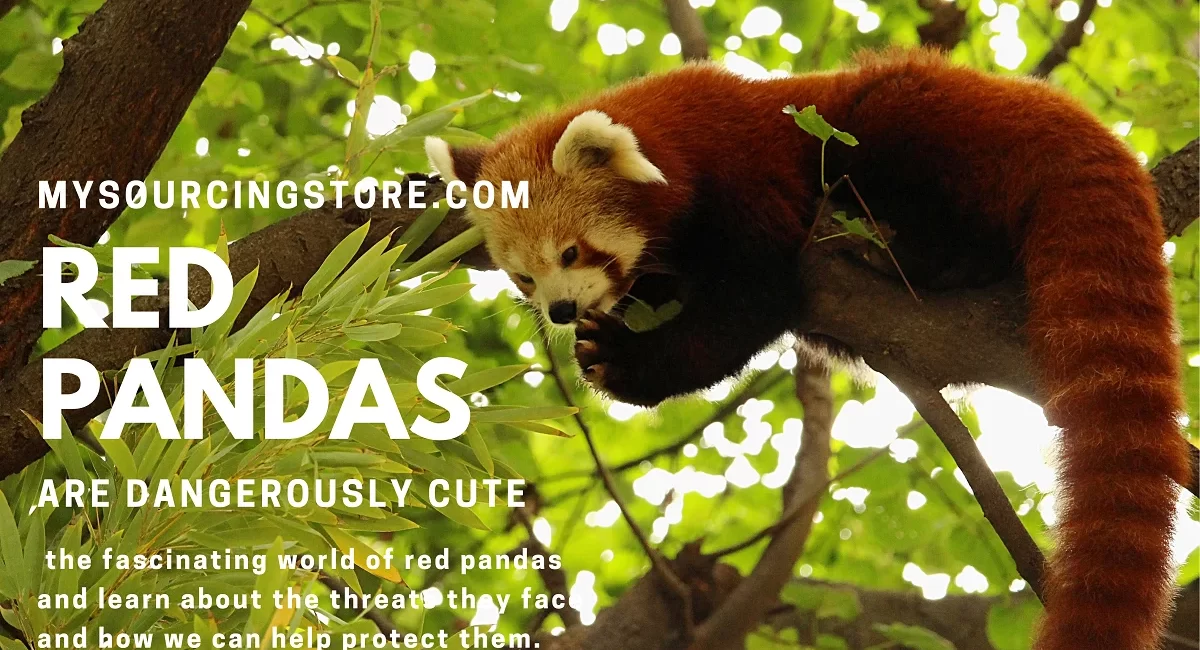Red Pandas are Dangerously Cute
Red pandas, also known as lesser pandas, are small and adorable creatures found in the mountainous regions of Nepal, Bhutan, India, and China. Their unique physical features and playful nature have made them a popular choice for zoos and wildlife parks. However, the increasing popularity of these animals has put them at risk of extinction. In this article, we will explore the fascinating world of red pandas and learn about the threats they face and how we can help protect them.
Introduction
In this section, we will provide an overview of red pandas, including their physical characteristics, habitat, and behavior.
What are Red Pandas?
Red pandas are small, arboreal mammals that belong to the family Ailuridae. They are native to the Himalayan region and are found at elevations between 6,000 and 12,000 feet.
Physical Characteristics
Red pandas have a distinctive reddish-brown fur coat with white markings on their face and belly. They have long, bushy tails that help them balance on tree branches and keep them warm in cold temperatures.
Habitat
Red pandas are found in temperate forests with a dense understory of bamboo. They are primarily found in the eastern Himalayas and southwestern China.
Behavior
Red pandas are solitary animals that are active during the day and night. They are excellent climbers and spend most of their time in trees. They are also known for their playful and curious behavior.
What makes red pandas so cute?
Red pandas are one of the cutest animals on the planet, with their striking fur patterns and playful personalities. Their small size and big, expressive eyes make them irresistible to many people. In addition to their good looks, red pandas are also fascinating creatures with unique behaviors and adaptations that make them well-suited to their mountainous habitat.
Threats to Red Pandas
In this section, we will discuss the various threats that red pandas face, including habitat loss, poaching, and climate change.
Habitat Loss
The primary threat to red pandas is habitat loss. The destruction of bamboo forests due to deforestation, agriculture, and development has significantly reduced the availability of suitable habitat for red pandas.
Poaching
Red pandas are also targeted by poachers for their fur and as pets. The demand for red panda fur and body parts in traditional medicine has led to a significant decline in their population.
Climate Change
Climate change is also a significant threat to red pandas. As temperatures rise, the bamboo forests they depend on are shifting to higher altitudes, making it difficult for red pandas to find suitable habitat.
Conservation Efforts
In this section, we will discuss the various conservation efforts being made to protect red pandas, including habitat restoration, anti-poaching measures, and education programs.
Habitat Restoration
Habitat restoration is one of the most effective ways to protect red pandas. Conservation organizations are working to restore bamboo forests and create protected areas where red pandas can live and thrive.
Anti-Poaching Measures
Anti-poaching measures are also critical in protecting red pandas. Conservation organizations are working with local communities to raise awareness about the importance of protecting red pandas and the consequences of poaching.
Education Programs
Education programs are also essential in promoting red panda conservation. Conservation organizations are working with schools and local communities to educate people about red pandas and their importance in the ecosystem.
Can red pandas be kept as pets?
No, red pandas are an endangered species, and it is illegal to keep them as pets. In addition to being illegal, keeping red pandas as pets is harmful to their well-being, as they require specialized care and a specific diet to remain healthy. Removing them from their natural habitat also disrupts their ecosystem and threatens their survival as a species.
The Breeding Patterns of Red Pandas
Red Pandas are seasonal breeders, with mating occurring between January and March. Females give birth to one to four cubs, which are born blind and helpless, weighing only around 120 grams. The cubs are weaned after six months and become independent at around one year of age. Red Pandas reach sexual maturity at around two to three years of age.
Conclusion
Red pandas are adorable and unique animals that are at risk of extinction due to habitat loss, poaching, and climate change. However, with the help of conservation efforts, we can protect these animals and ensure their survival. By restoring their habitat, preventing poaching, and educating people about their importance, we can help secure a future for red pandas.
FAQs
- Are red pandas related to giant pandas?
No, red pandas are not related to giant pandas. They are in a separate family called Ailuridae.
- How many red pandas are left in the wild?
It is estimated that there are fewer than 10,000 red pandas left in the wild.
- What do red pandas eat?
Red pandas primarily eat bamboo, but they also consume fruits, insects, and small animals.
- Can red pandas be kept as pets?
No, red pandas are endangered and it is illegal to keep them as pets. It is also harmful to their well-being to be removed from their natural habitat.
- How can I help protect red pandas?
You can help protect red pandas by supporting conservation efforts, such as donating to organizations working to protect their habitat and spreading awareness about their conservation needs. You can also reduce your carbon footprint and support sustainable practices to mitigate the effects of climate change on their habitat.




Leave a Comment